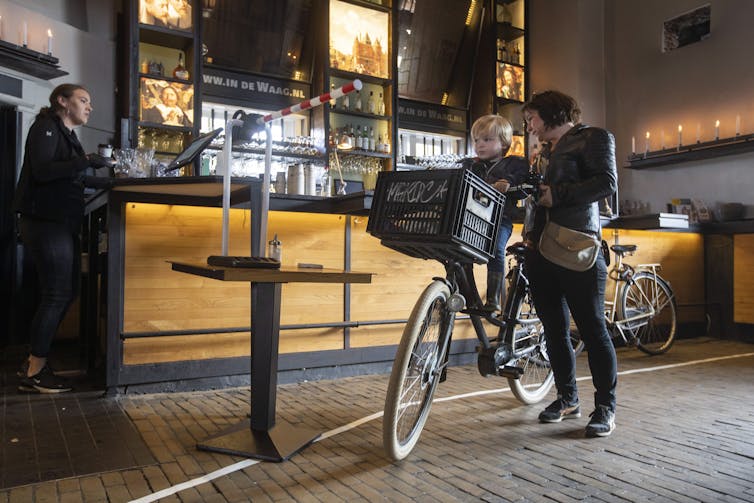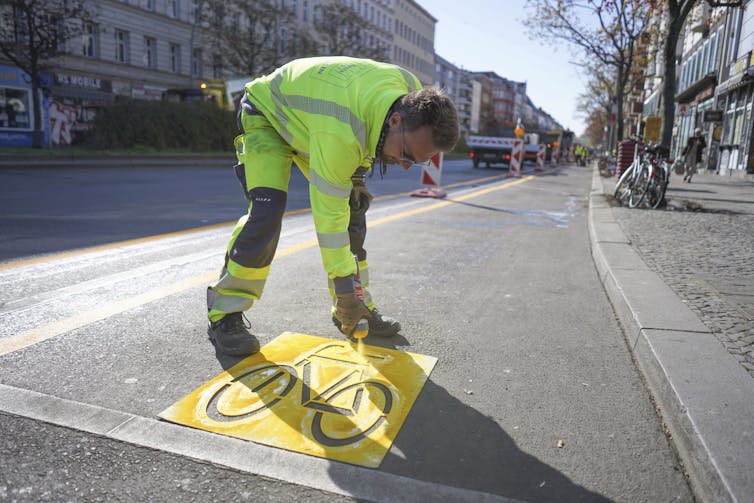As physical distancing measures to limit the spread of COVID-19 begin to relax in some countries and people return to work, the fears surrounding transportation and commuting continue to weigh on the minds of many.
Once popular options like public transit and ridesharing, such as Uber, now carry the risk of potentially exposing riders to COVID-19. The Toronto Transit Commission recently reported that even if it operated at only 30 per cent of capacity, roughly 510,000 riders, passengers would not be able to keep a safe distance from each other.

Personal vehicles do allow for adequate distancing, but many cities cannot support the shift of public transit riders to cars. There is also a substantial cost-barrier associated with car ownership: parking, insurance, gas.
As a result, more people in North America are taking to cycling — and bike shops across the United States and Canada are seeing record sales and facing supply shortages.
The benefits of cycling
This recent surge in cyclists is beneficial for several reasons. From a public health perspective, cycling is a form of physical activity that can improve physical and mental health, prevent a host of chronic diseases, such as heart disease and Type 2 diabetes, and reduce burden on the health-care system. This translates into hundreds of millions of dollars saved from annual health-care costs for Canada.
From our partners:
But there is also a high return on investment from installing cycling networks. The increase in cyclists diverts cars from streets, resulting in reduced traffic and pollution, while increasing pedestrian and cyclist safety and property values. Overall, the benefits of investing in cycling infrastructure and increasing the number of cyclists on the road far outweigh its associated costs, with one study estimating a 400 per cent to 500 per cent return.
The room for growth in terms of new cyclists is enormous. Prior to the pandemic only a small proportion of people biked or walked to work: 6.7 per cent in Toronto, 7.2 per cent in Montréal and 9.1 per cent in Vancouver, and in the U.S., five per cent to 10 per cent of people in the most bike-friendly cities, like Portland, Ore., ride to work.

Compared to many European bike-friendly cities like Copenhagen, which boasts a 62 per cent bicycle commuter rate, North American cities fall far behind.
Keeping new cyclists on the road
Some cities, like London, U.K., and Toronto, have closed roads to cars to make streets safer for cyclists and pedestrians. Major metropolitan cities like New York and Paris have passed bills to expand cycling infrastructure as a means to promote and maintain the accessibility and safety of cycling.
These measures, however, have been put in place in response to COVID-19 and physical distancing regulations. As cities reopen — and if transportation-related fears lessen — new cyclists may return to traditional modes of transportation, especially as the seasons bring colder weather to some cities.
So how do we get new cyclists to continue biking?
As exercise behaviour scientists, our research focuses on the factors that affect people’s motivation and intention to exercise. We’re also avid cyclists — and know what influences cycling in our communities.

Three key factors that can facilitate and maintain cycling are safety, efficiency and cost. To address these factors, we recommend the following strategies:
Construct separated bike lanes: Safety is a paramount concern for all cyclists. Separating vehicle and foot traffic from cyclists increases safety for all groups, and should be a priority. A multi-city study found cities with protected and separated bike lanes showed 44 per cent fewer deaths, compared to an average city.
Connect existing bike networks: Many cyclists feel the connections from one bike route to another limit their cycling. Cities should identify popular routes and extend existing networks to support those routes. This will help create a more safe and efficient means of transportation.
Improve bike network maintenance during the winter: Snowy weather is a reality for cycling in Canada and parts of the U.S. Winter cyclists identify poor road surface maintenance as the primary deterrent to winter cycling — not the air temperature or weather. Some snowy countries, like Finland, make road and bike network maintenance during the winter a priority. Doing this means there are fewer cyclists on main roads and arteries, leading to a safer, quicker commute for all.
Incentivize cycling: We know cycling is hugely beneficial to health and well-being over the long term, yet people are rarely persuaded to start or continue a behaviour because of possible future rewards. Incentives, however, can help keep new cyclists on the road. Governments should offer tax deductions for bike-related purchases and services. Insurance companies should reduce premiums for bikers, as they do for non-smokers. Companies should make a bike purchase part of employee benefits, similar to the Cycle-to-Work and BiketoWork schemes popular in the U.K. and Ireland, respectively.
These strategies, taken together, will have the greatest impact on enhancing bike safety, optimizing travel time and making cycling more financially attractive than traditional modes of transportation.
Ultimately, these strategies also normalize cycling, further encouraging this new generation of cyclists to stick with it. Enacting these strategies can transform cycling from an alternative mode of transportation to the safest, fastest and most cost-effective mode of transportation, well beyond the duration of COVID-19.
Wuyou Sui, PhD Candidate, Exercise and Health Psychology Lab, Western University and Harry Prapavessis, Professor, Kinesiology, Western University
This article is republished from The Conversation under a Creative Commons license. Read the original article.













